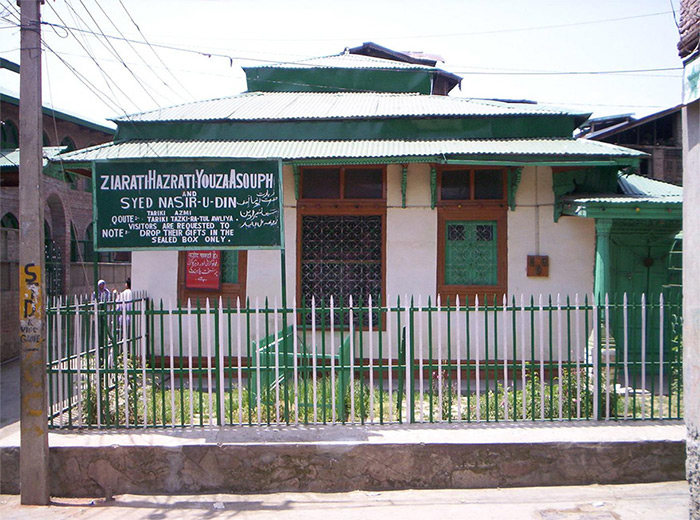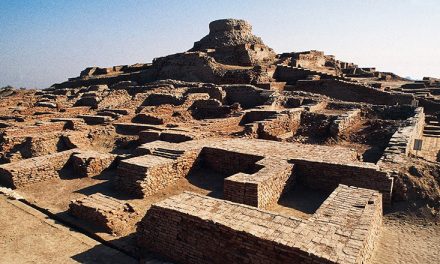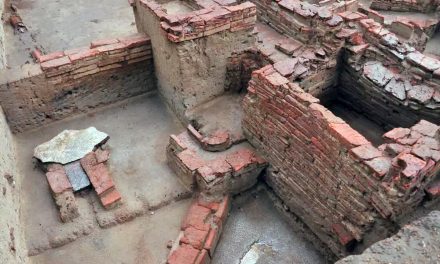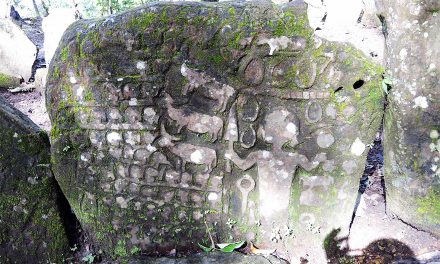
A belief that Jesus survived the crucifixion and spent his remaining years in Kashmir has led to a run-down shrine in Srinagar making it firmly onto the must-visit-in India tourist trail. In the backstreets of downtown Srinagar is an old building known as the Rozabal shrine. It’s in a part of the city where the Indian security forces are on regular patrol, or peering out from behind check-posts made of sandbags.
There are still occasional clashes with militants or stone-throwing children, but the security situation has improved in recent times and the tourists are returning.
When I first searched for Rozabal two years ago, the taxi circled around a minor Muslim tomb in a city of many mosques and mausoleums, the driver asking directions several times before we found it.
The shrine, on a street corner, is a modest stone building with a traditional Kashmiri multi-tiered sloping roof.
A watchman led me in and encouraged me to inspect the smaller wooden chamber within, with its trellis-like, perforated screen.
Through the gaps I could see a gravestone covered with a green cloth.
When I returned to the shrine recently though, it was shut – its gate padlocked because it had attracted too many visitors.
The reason? Well, according to an eclectic combination of New Age Christians, unorthodox Muslims and fans of the Da Vinci Code, the grave contains the mortal remains of a candidate for the most important visitor of all time to India.
‘Crazy professor’
Officially, the tomb is the burial site of Youza Asaph, a medieval Muslim preacher – but a growing number of people believe that it is in fact the tomb of Jesus of Nazareth.
They believe that Jesus survived the crucifixion almost 2,000 Easters ago, and went to live out his days in Kashmir.
“What else could they do? They had to close it,” Riaz told me.
His family home almost overlooks the shrine, and he is witheringly dismissive of the notion that Jesus was buried there.
“It’s a story spread by local shopkeepers, just because some crazy professor said it was Jesus’s tomb. They thought it would be good for business. Tourists would come, after all these years of violence.
“And then it got into the Lonely Planet, and too many people started coming.
“And one foreigner…” he gave me an apologetic look, “broke off a bit from the tomb to take home with him. So that’s why it’s closed now.”
On cue, a couple of unwashed and exhausted Australians appeared, carrying the latest edition of the Lonely Planet travel guide to India, which, sure enough, carried the tale of Jesus’s tomb, with some caveats about crackpots and blasphemy.
They asked me to take a photo of them outside the shrine – but were not desperately disappointed that it was closed.
The tomb of Jesus was just another place to tick off on their tourist-in-India must-visit list.
Famous meeting
The ruins of a Buddhist monastery in a spectacular location halfway up a mountainside north of Srinagar are not, yet, mentioned in the Lonely Planet.
It’s a spot that I had previously been unable to visit, because as a senior police officer told me, it was “infested with terrorists”.
But the watchman now seemed prepared for the arrival of mass tourism, with his 50 words of English, and his hidden stock of ancient terracotta tiles for sale.
He informed me that Jesus was among the religious leaders who attended a famous Buddhist meeting here in AD80, and even pointed to the place where he sat.
The stories of Jesus in India are not just aimed at gullible tourists – they date back to the 19th Century.
They were part of attempts to explain the striking similarities between Christianity and Buddhism, a matter of great concern to 19th Century scholars – and also a desire among some Christians to root the story of Jesus in Indian soil.
Missing Years of Jesus Christ
There is talk of the missing years of Jesus, unmentioned in the gospels, when he was between the ages of 12 and 30.
Some say he was in India, picking up Buddhist ideas. These aren’t notions that have entirely died out.
The US-based Christian sect, known as the Church Universal and Triumphant, is the best-known modern supporter of the belief that Jesus lived in Kashmir, though they don’t believe he died there.
And in Islam, in which Jesus is the penultimate prophet, there is also a minority tradition adopted by the controversial Ahmeddiya sect, that Rozabal does contain the grave of Jesus.
Professional historians tend to laugh out loud when you mention the notion that Jesus might have lived in Kashmir – but his tomb is now firmly on the tourist trail – and a growing number of credulous visitors believe that he was buried in the Rozabal shrine.
And for those who scoff, remember that others have argued, just as implausibly, that Jesus came to Britain.
A theory that was much in vogue when the poet William Blake famously asked: “And did those feet in ancient time, walk upon England’s mountains green? And was the holy Lamb of God on England’s pleasant pastures seen?”















Here is an article on Jesus Christ appeared in the Indiadivine.org. Kerala Christians should read this and understand that their son of God too visited India to learn from our Saints and Rishis. Admit, copycats of Hinduims that this is the mother of all religions and there is nothing in your holy book that is not mentioned in our Vedas/Upanishads and puranas.